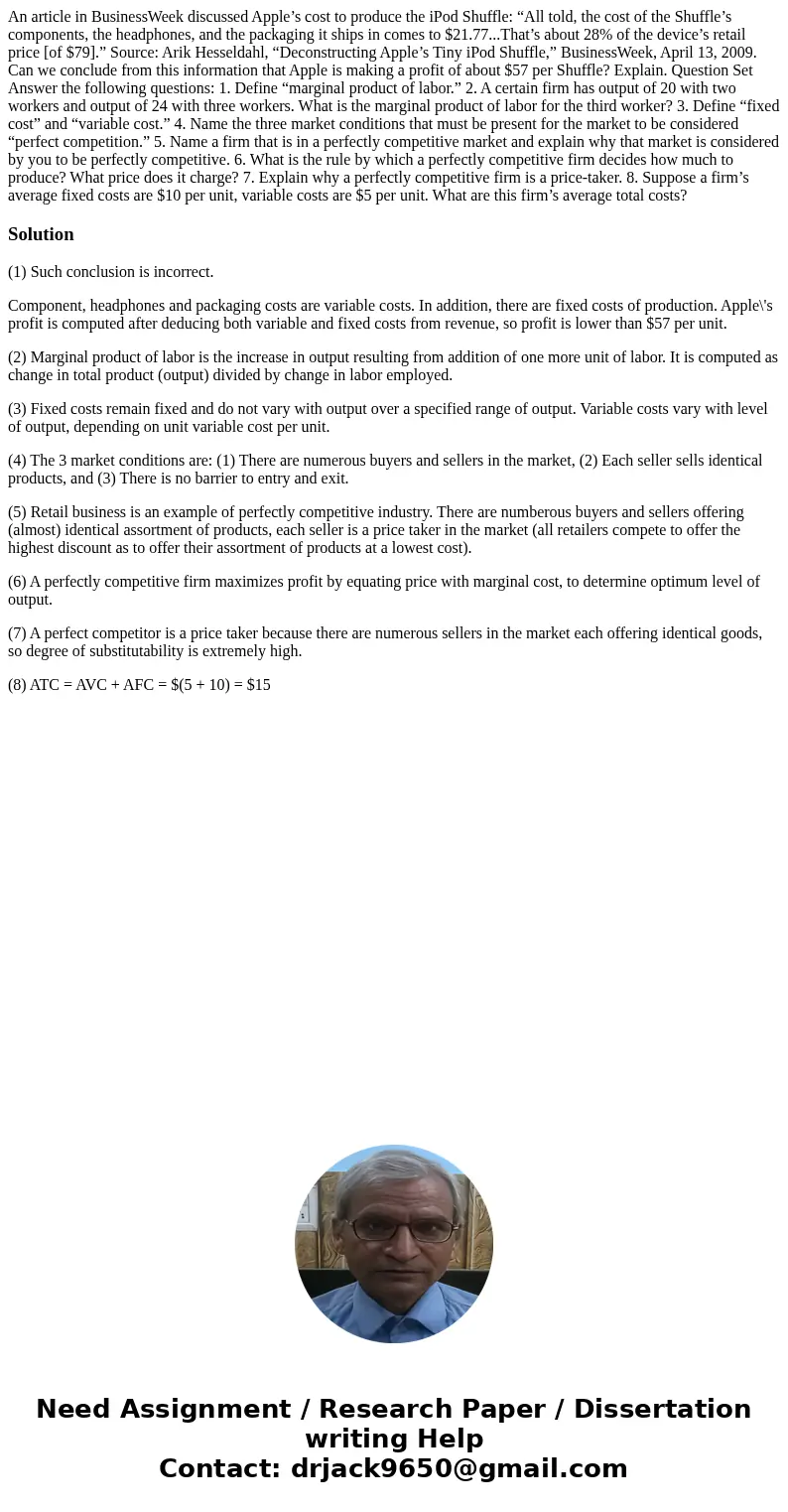An article in BusinessWeek discussed Apples cost to produce
An article in BusinessWeek discussed Apple’s cost to produce the iPod Shuffle: “All told, the cost of the Shuffle’s components, the headphones, and the packaging it ships in comes to $21.77...That’s about 28% of the device’s retail price [of $79].” Source: Arik Hesseldahl, “Deconstructing Apple’s Tiny iPod Shuffle,” BusinessWeek, April 13, 2009. Can we conclude from this information that Apple is making a profit of about $57 per Shuffle? Explain. Question Set Answer the following questions: 1. Define “marginal product of labor.” 2. A certain firm has output of 20 with two workers and output of 24 with three workers. What is the marginal product of labor for the third worker? 3. Define “fixed cost” and “variable cost.” 4. Name the three market conditions that must be present for the market to be considered “perfect competition.” 5. Name a firm that is in a perfectly competitive market and explain why that market is considered by you to be perfectly competitive. 6. What is the rule by which a perfectly competitive firm decides how much to produce? What price does it charge? 7. Explain why a perfectly competitive firm is a price-taker. 8. Suppose a firm’s average fixed costs are $10 per unit, variable costs are $5 per unit. What are this firm’s average total costs?
Solution
(1) Such conclusion is incorrect.
Component, headphones and packaging costs are variable costs. In addition, there are fixed costs of production. Apple\'s profit is computed after deducing both variable and fixed costs from revenue, so profit is lower than $57 per unit.
(2) Marginal product of labor is the increase in output resulting from addition of one more unit of labor. It is computed as change in total product (output) divided by change in labor employed.
(3) Fixed costs remain fixed and do not vary with output over a specified range of output. Variable costs vary with level of output, depending on unit variable cost per unit.
(4) The 3 market conditions are: (1) There are numerous buyers and sellers in the market, (2) Each seller sells identical products, and (3) There is no barrier to entry and exit.
(5) Retail business is an example of perfectly competitive industry. There are numberous buyers and sellers offering (almost) identical assortment of products, each seller is a price taker in the market (all retailers compete to offer the highest discount as to offer their assortment of products at a lowest cost).
(6) A perfectly competitive firm maximizes profit by equating price with marginal cost, to determine optimum level of output.
(7) A perfect competitor is a price taker because there are numerous sellers in the market each offering identical goods, so degree of substitutability is extremely high.
(8) ATC = AVC + AFC = $(5 + 10) = $15

 Homework Sourse
Homework Sourse